Please view our updated COVID-19 guidelines and visiting procedures →.

In celebration of National Nurses Month, May’s blog will recognize the enormous contribution of nursing to the hospice movement – in the United States and worldwide.
The Connecticut Hospice, Inc., America’s first, was founded by Nurse Florence Wald. After earning her Masters in Nursing in 1941 and serving in the United States Signal Corp in World War Two, Florence was Dean of the Yale School of Nursing from 1959 to 1966, and became a full Professor of Nursing in 1980. Inspired by the work of Dr. Cicely Saunders, a one-time nursing student who started the modern hospice movement at St. Christopher’s Hospice in London, she founded The Connecticut Hospice in 1974, making it not only the first hospice in America, but the first hospice in the world to care for patients at home.

Fifty years later, The Connecticut Hospice remains a leader in the hospice movement in Connecticut, the United States, and around the world. The contributions of nursing, not only at Connecticut Hospice, but to hospice nationwide, cannot be overstated. Hospice care is nurse-driven, nurse-supported, and nurse-provided, whether it is delivered to patients at home, in assisted living or skilled nursing facilities, in free-standing hospices, or in hospital-based hospice.
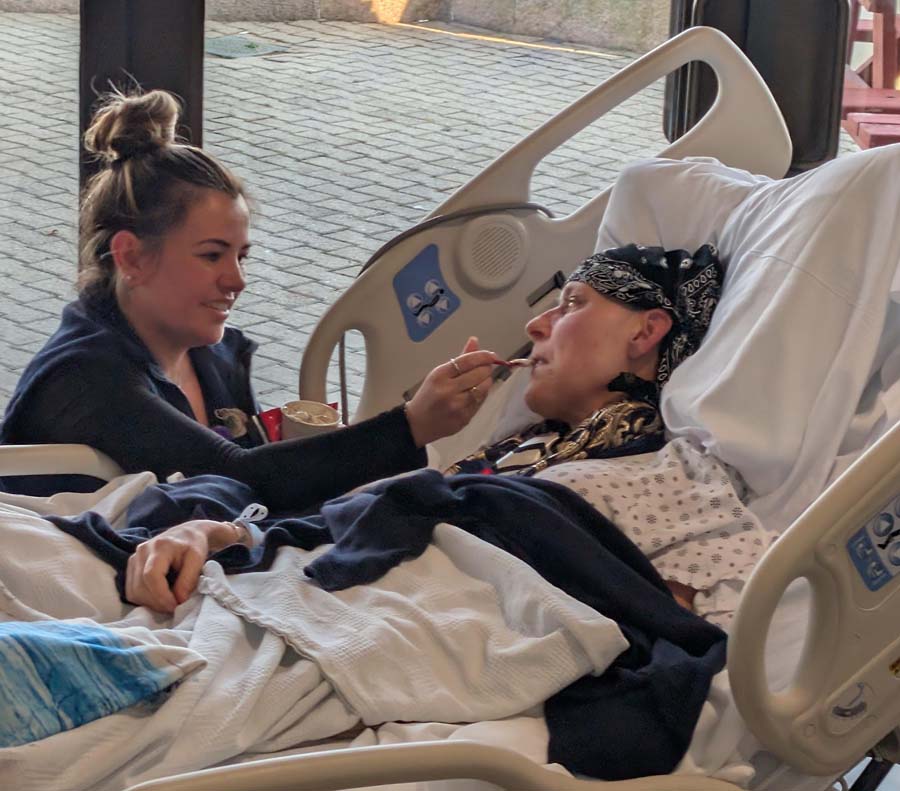
Hospice care of unparalleled excellence is provided by the nursing staff of The Connecticut Hospice, headquartered in Branford and crossing the state from Fairfield in the west, Meriden in the north, to Essex and Westbrook in the east. Nine full-time registered nurses, two full-time licensed practical nurses, and seven full-time certified nursing assistants serve patients at home, in nursing homes, and in skilled nursing facilities, providing 24-7 availability for visits, complementing social work, volunteer, and spiritual care staff.
Additional nursing staff caring for hospice inpatients in our 52-bed licensed inpatient facility on the water in Branford includes eighteen registered nurses and eleven certified nursing assistants. Senior leadership also sees its complement of nurses, with a new RN Chief Executive Officer, and an RN Chief Operating Officer, Director of Home Care, and Director of Inpatient Nursing. Four advance-practice registered nurses serve our palliative care and GUIDE patients and provide inpatient medical care in collaboration with the physicians of the Department of Medicine. Physician staff, in contrast, consists of one full-time, and four part-time MD/DOs.

The Connecticut Hospice exemplifies the critical role and importance of nurses in American health care. Join us in celebrating them for National Nurses Month, May 2025.

“When my mother was in Connecticut Hospice, she was so beautifully cared for by the staff. One day, I walked in, and a volunteer was sitting by her bedside while she was resting comfortably. The volunteer had been with my mother until I came. That level of care is what drew me to volunteer at The Connecticut Hospice. The notion that I could bring the same comfort to someone else has kept me volunteering for many years now,” said Sandy Piontek (Volunteer since 2018).
Hospice is unique as it is the only provider with Medicare Conditions of Participation that require volunteers to provide a significant portion of patient care hours. In 1983, when the Medicare Hospice Benefit was approved by Congress and signed into law by President Reagan, it was deemed that 5% of a hospice’s total care-giving staff is required to be unpaid (volunteer).
The Connecticut Hospice was founded in 1974 by Florence Wald, a nurse educator, and other healthcare professionals, including doctors, nurses, and clergy. Volunteers have played a critical role from the very start. For example, also in 1974, CT Hospice provided the first hospice home visit in the U.S., conducted by a nurse and a volunteer. Today, The Connecticut Hospice relies on the invaluable contributions of over 200 volunteers who work alongside staff in its Branford in-patient facility and in homes across the state.
Volunteers provide a wide range of support to patients and families. Volunteers assist in all areas of operation, including hands-on patient care assisting the inpatient medical staff, homecare, arts & music, as well as spiritual care, social work, transportation, gardening. and special events.
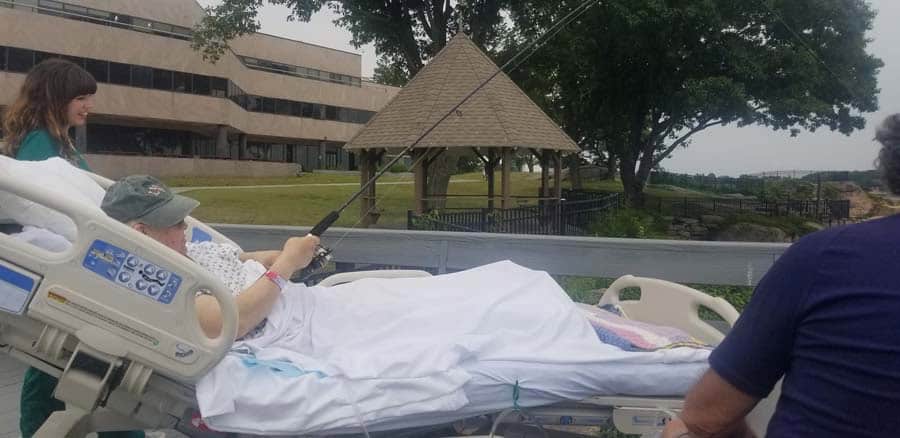
The volunteer network includes working professionals, homemakers, retirees, students, and even grade school children involved in special projects.
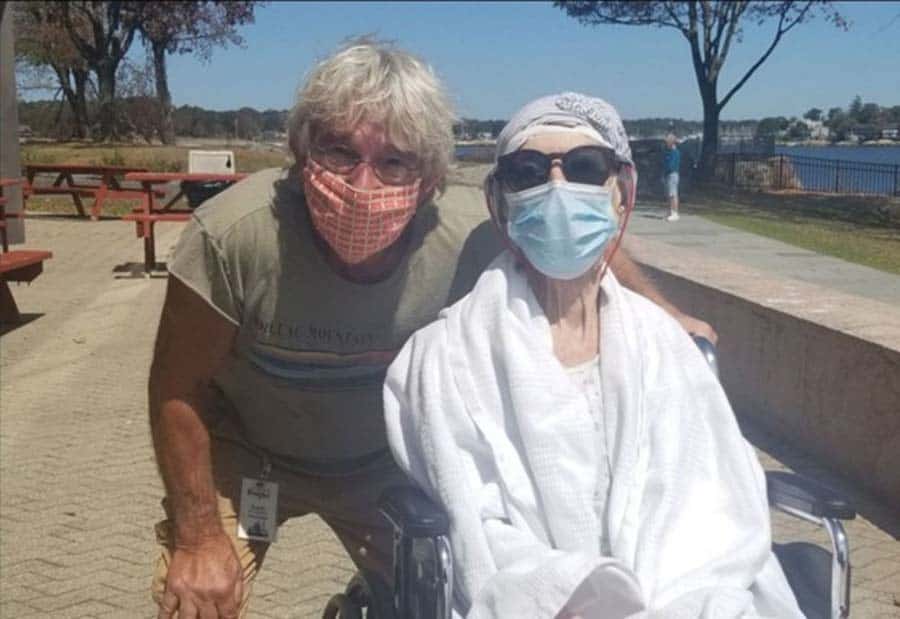
Prospective volunteers undergo background checks and fingerprinting through the Dept. Of Public Health. They also receive professional training from our hospice staff, ensuring they are well-prepared to assist patients and their families.
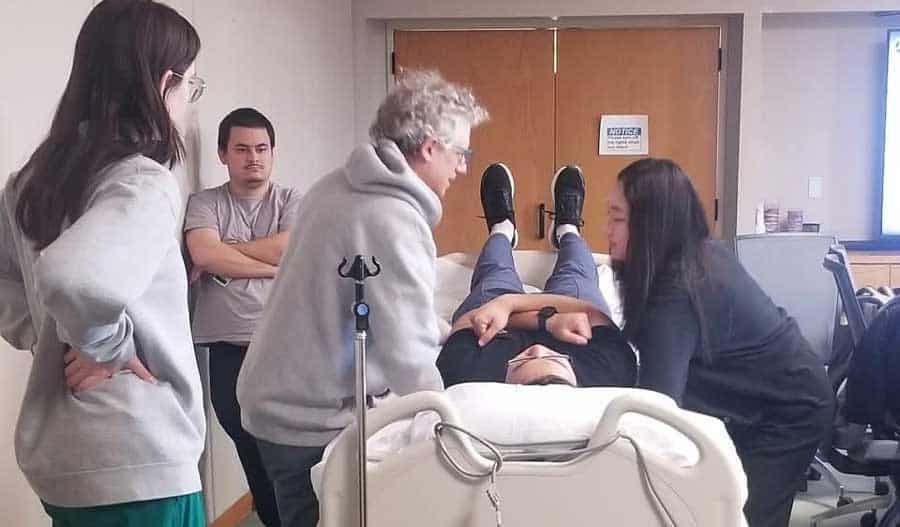
Connecticut Hospice collaborates with local colleges and schools to integrate volunteer programs into community action initiatives. For example, we have a very special relationship with Yale University undergraduates. Students who are generally pre-med volunteers in the Patient Assist role. They are rigorously trained in body-mechanics and invited to shadow Dr. Brett Prestia under the John D. Thompson Institute program.

“As a physician at Connecticut Hospice, I see every day how essential our volunteers are to the care we provide. Their presence brings comfort, companionship, and a human touch that cannot be prescribed or charted. Whether they’re sitting at the bedside, offering a listening ear, reading to a patient, or simply being present in silence, volunteers meet emotional and spiritual needs in ways that deeply complement our medical care. They help create an atmosphere of dignity, compassion, and peace—not just for patients, but also for families and staff, " said Dr. Brett Prestia, Chief Liaison.
Volunteers are part of the heartbeat of our hospice. They remind us that healing isn’t always about curing—it’s about connection. Their time, presence, and kindness are gifts that have a lasting impact. Volunteers are humble, selfless and have a quiet strength as they work alongside the medical team during some of life’s most sacred moments. They are a core part of the team, and we learn so much from them. Connecticut Hospice draws from a rich well of diverse experiences, backgrounds, and talents that help our patients and organization thrive. Volunteers from all walks of life ranging from high school to retirement are valued in so many ways. We appreciate their dedication and emphasize again that anyone who desires to serve in any capacity has a respected place in our organization.
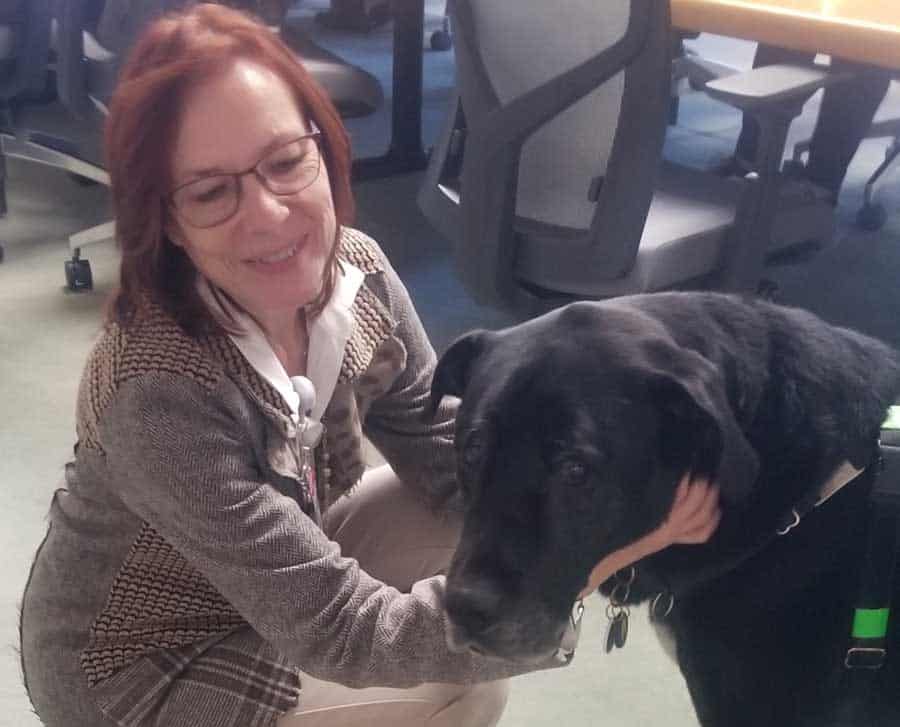
To learn more about volunteering at Connecticut Hospice, contact Joan Cullen at [email protected].

Opioids are commonly used to relieve pain and shortness of breath in seriously ill people and those at the end of life. While highly effective, these drugs also cause side effects that may limit their use.

Addiction – also called opioid use disorder – is believed by many to inevitably result from prolonged use of opioids, but this concern is unmerited when these important medications are used appropriately by experienced practitioners.
Common opioid side effects such as sedation, constipation, and nausea usually wear off within a few days of use and can be countered with other medications. For example:
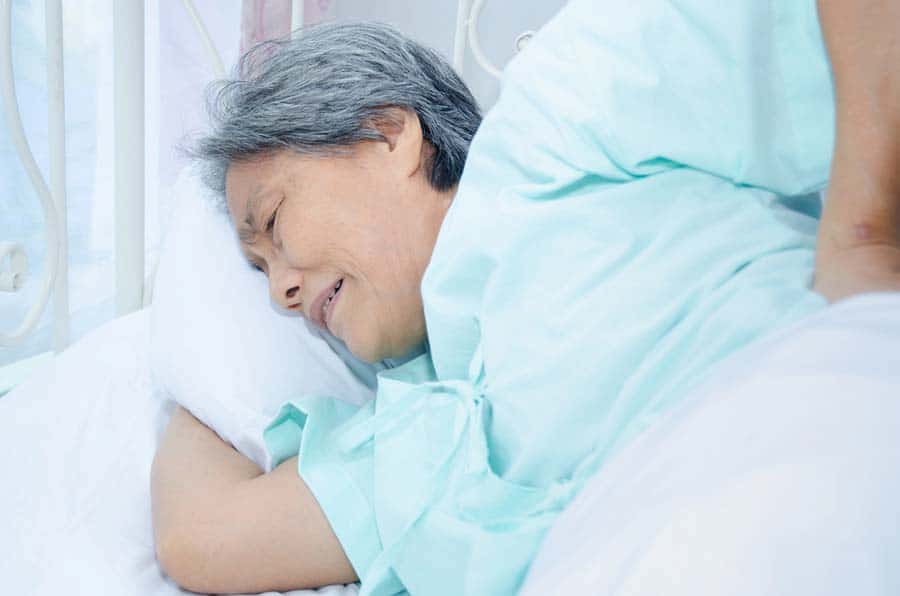
Other, less potent but effective pain medications include:

Adjuvant medications are drugs that are not primarily designed for pain relief but can help manage pain by either enhancing the effects of traditional pain medications or providing their own analgesic properties. They are especially useful for neuropathic pain, which often does not respond well to opioids alone.
Adjuvants include medications that either:
Used for:
Used for:

Used for:
Used for:
Used for:

While it is beyond the scope of this blog, all these agents have side effects and toxicities. Anyone using them should:
Pain is often worsened by underlying conditions, such as:
Managing these conditions alongside pain treatment can significantly improve overall well-being.
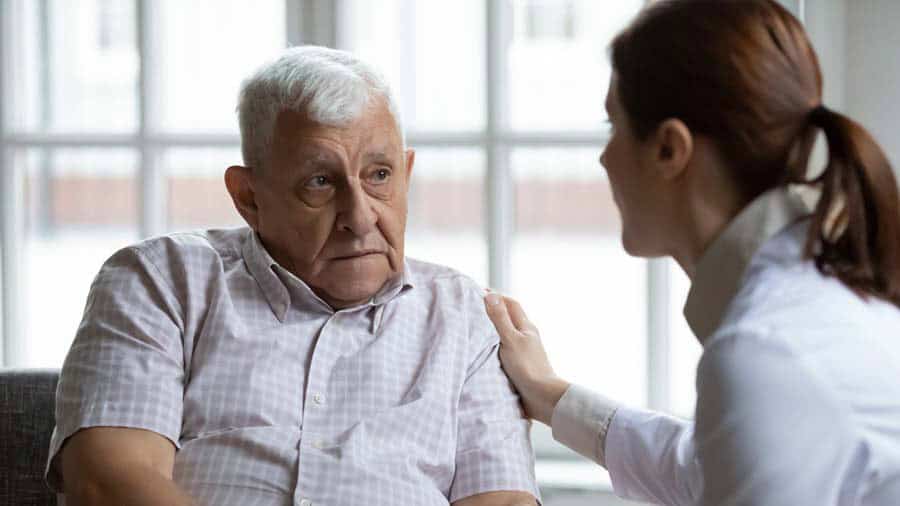
At Connecticut Hospice, we specialize in expert pain and symptom management for patients facing serious illness and end-of-life care. Our dedicated team understands that effective pain relief is essential to maintaining comfort and dignity.
Whether through outpatient care or our licensed inpatient hospital, we provide the highest level of personalized pain relief and symptom control to enhance quality of life.
Compassionate, expert pain relief is our priority. Let us help you find comfort and dignity at every stage of care.
Call us today at 203-315-7543 to learn more or schedule an appointment.

Respiratory failure -- the inability to breathe well enough to maintain life -- is a very common consequence of a broad spectrum of medical illnesses. In fact, it is the final consequence of any illness that gets bad enough to cause death; people stop breathing and their hearts stop beating. The exception are people who suffer from a heart rhythm abnormality which causes their heart to stop prior to their losing the ability to breathe. In both cases, without further medical intervention, death ensues.
For many, respiratory failure represents a natural death. For example, patients in hospice who are no longer benefiting from treatments directed to the management of their illnesses will get sicker until they eventually suffer respiratory failure. It is the hope of the hospice team that they will be able to enjoy the time that remains to them when while they are in hospice as much as possible before this eventuality.
For others, respiratory failure may happen while they are still experiencing and seeking treatment for a manageable or even curable illness. For example, someone with cancer may be benefiting from treatment directed towards its cure but still suffer pneumonia serious enough to cause respiratory failure. Without urgent respiratory support, that patient will die.
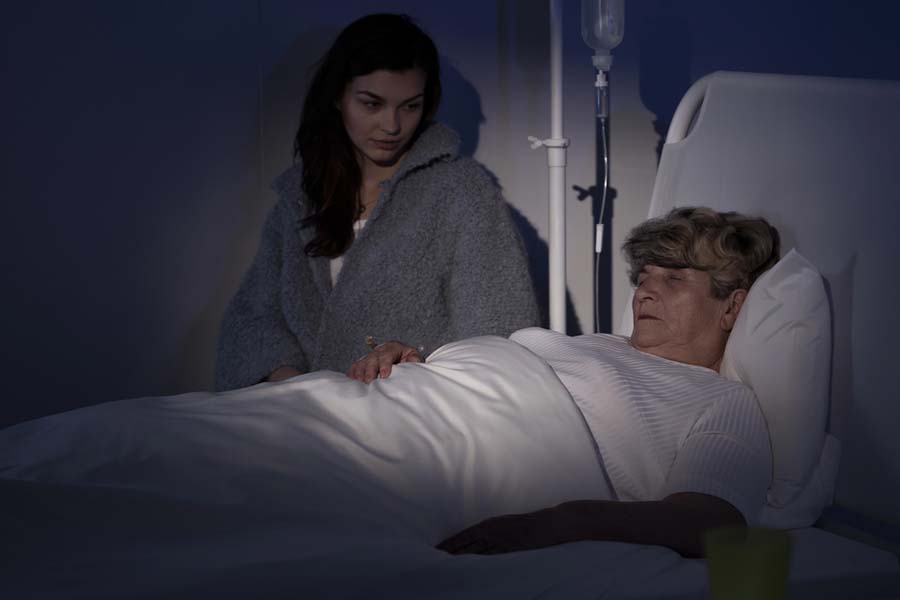
This is where intubation comes in. This straightforward process involves inserting a tube called an endotracheal tube into a patient's trachea, or windpipe, fixing it into place, and attaching it to a machine called a ventilator that will do the patient’s breathing for him or her. This keeps the patient alive while doctors treat the pneumonia – or a wide variety of other problems -- and hopefully cure it, allowing the patient to breathe on their own once again.

In some cases, patients may be treated with so-called noninvasive ventilation, meaning that rather than inserting an endotracheal tube -- or intubating -- a mask that covers the nose and mouth is strapped tightly on the patient and a combination of air and oxygen blown forcibly into the patient's lungs. Called CPAP or BiPAP, this procedure is a bit like driving a car at 60 miles an hour and putting your head out the window face first into the wind. Other people have partial respiratory failure. They can breathe on their own for a period of hours and then become exhausted, after which they are provided noninvasive ventilation to both keep them breathing and give them a rest.
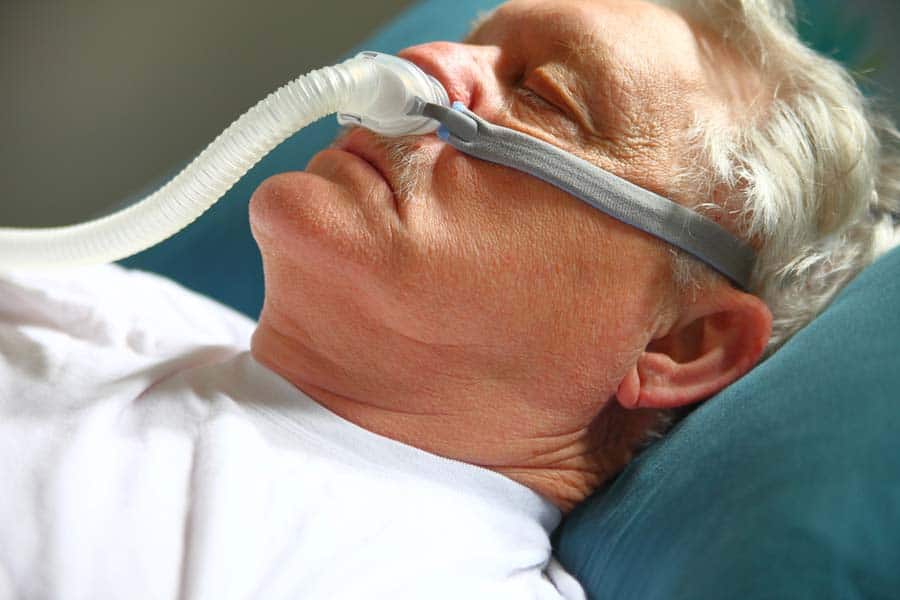
Sometimes, despite being treated for the condition that caused respiratory failure, patients are not able to breathe unassisted and doctors are unable to “extubate” them -- or remove the endotracheal tube. Many such patients are wide awake and enjoying a good quality of life and elect to remain on ventilator support. The intubation tube, however, cannot be left in long term. It has a doughnut shaped balloon at the end, which is inflated after insertion to hold it in place. This causes pressure on the delicate walls of the windpipe. Over the long term, this causes damage and scarring that can dangerously narrow the windpipe. Instead, a tracheostomy is performed. In this procedure, a hole is cut into the windpipe well below the upper trachea, where scarring is most likely, and a short J-shaped tube inserted into it to be connected to the ventilator. This tube can be taken out for cleaning and replaced, improving hygiene. It even allows the placement of a speaking valve that can return the ability to speak out loud to a patient who hasn't been able to do so for a period of days or even weeks.
The decision about whether to accept intubation and ventilator support is highly personal. People who have treatable or even curable serious or life threatening illness may elect to be intubated while undergoing treatment in the hopes that, should they suffer respiratory failure from a complication like pneumonia, they will regain the ability to breathe on their own and resume treatment for their underlying illness. Others, with terminal illness where progression is inevitable may elect to decline intubation and ventilatory support and live out their lives in comfort and die a natural death at home in the company of family and friends while in hospice care.

Many patients receiving care at home from The Connecticut Hospice use CPAP and BiPAP, and some have used invasive ventilation with a tracheostomy at home. All three are options at our Branford inpatient unit.
Should you or someone you know be facing a decision about intubation and ventilatory support, the Connecticut Hospice Stand by Me Palliative Care program can provide additional counseling on treatment options in serious illness. We are here to help.
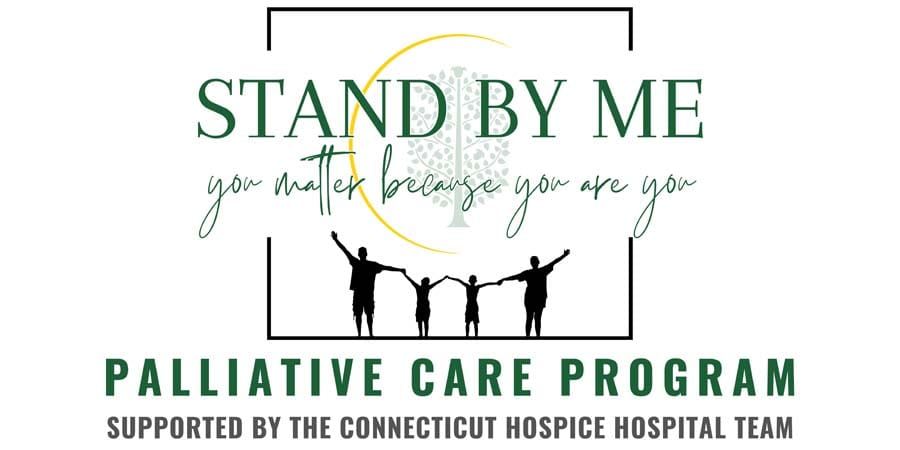

When caring for a hospice patient, making sure they receive their medications safely and comfortably is essential. Sometimes, swallowing pills can be difficult for these patients due to various conditions, including trouble swallowing, weakness, or other complications. One way to help is by crushing medications, but not all pills are safe to crush. Knowing which medications can be safely crushed and which cannot is crucial to avoid any potential harm.
This guide will cover why some medications can be crushed, which types are generally safe, which are not, and how to crush medications safely.
Many hospice patients have conditions that make swallowing pills challenging, such as:
Crushing medications can help ensure the patient gets their necessary medicine without added stress or discomfort. However, not all medications can be crushed safely, so it’s important to know which ones are suitable for crushing.
While not an exhaustive list, here are some general guidelines on the types of medications that are typically safe to crush:
Certain medications should never be crushed because it can change how they work, cause side effects, or even become dangerous. Here’s a list of common types that should not be crushed:
Here are a few common medications often used in hospice care that should not be crushed:
When crushing medications is appropriate, it’s essential to do it safely to ensure the medication is administered correctly and comfortably. Here’s a step-by-step guide:


If a medication cannot be crushed, there are alternative options:

Caring for a hospice patient involves many special considerations, including how they take their medications. Crushing pills can be a helpful solution, but it must be done with care and the guidance of a healthcare provider. Always double-check which medications can be safely crushed and explore other options if needed. Remember, the goal is to ensure that the patient remains comfortable and receives the best possible care.
If you have any questions about medication safety for your loved one, don’t hesitate to reach out to your hospice team. They are there to support you and provide guidance every step of the way.
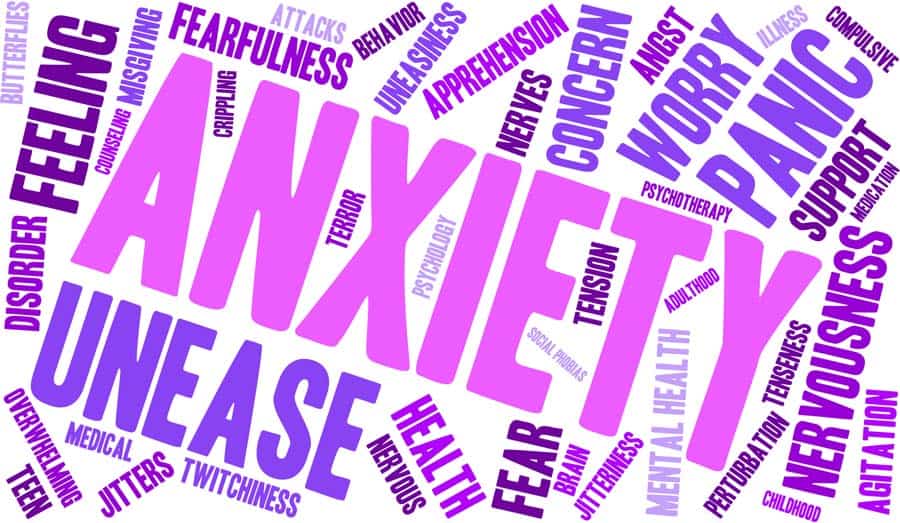
Anxiety is a common and normal response to terminal illness in hospice patients. Symptoms of anxiety, listed below, may be related to physical, psychological, social, spiritual, practical, and issues of loss that are prevalent at the end-of-life.
Although many hospice patients will experience fear and other manifestations of anxiety, a formal anxiety disorder, manifested by intense, excessive, and persistent worry and fear about everyday situations, is not common. Some patients, however, may experience severe anxiety related to serious illness; others may even express a desire to hasten dying as a means of avoiding anxiety.
Anxiety is estimated to affect 70% of patients at the end of life and is more common among women, physically impaired patients, and younger patients. Severe anxiety is less common, affecting less than 10% of patients.
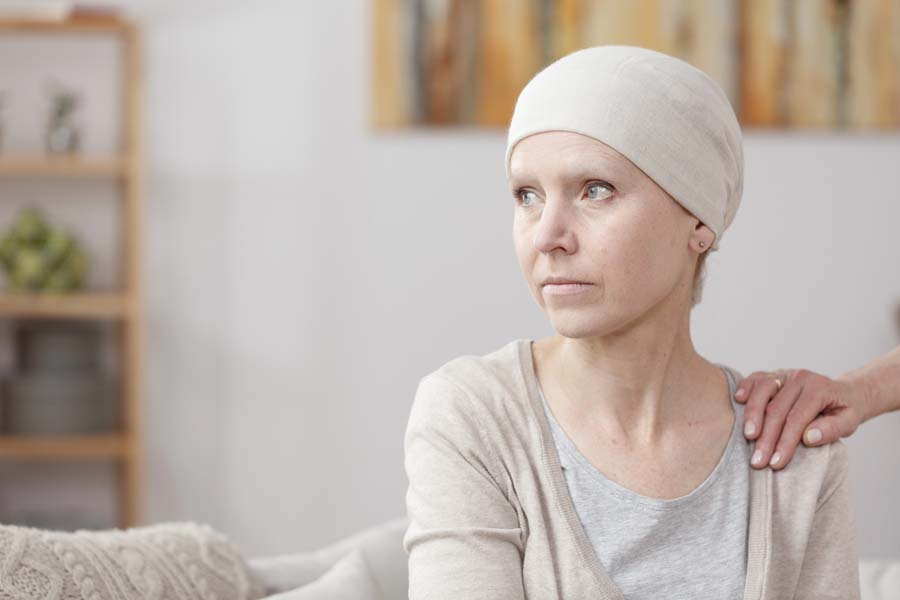

Although patients with serious illness commonly experience anxiety, they may not express these feelings, making it important for caregivers to listen for key words that can be a sign of underlying anxiety. Commonly, these words include “worried,” “scared,” “nervous,” and “concerned.”
Clinicians may also screen patients more formally for anxiety (and depression), using validated scales such as the brief Patient Health Questionnaire for Depression and Anxiety (PHQ-4) and the General Anxiety Disorder scale (GAD-7). Patients testing positive may need to be more formally assessed for major depression requiring pharmacologic treatment and monitoring over time for response.
Anxiety may also be due to an unmanaged underlying symptom, especially in patients without a personal or family history of anxiety, and those who do not respond to medications commonly used for its relief (reviewed below). Patients with shortness of breath, for example, can experience severe anxiety, which is relieved with the appropriate use of opioids.
In addition to depression, symptoms of anxiety may overlap with delirium, making careful assessment for this condition important. Patients with delirium, for example, can show poor sleep and inattention or difficulty focusing, which may also be seen in anxiety. Unlike people with anxiety, however, delirious patients typically also have disordered thought (such as hallucinations and delusions), disturbed consciousness (excessive lethargy, hyper-alertness, or both), and altered cognition – which are rarely seen in anxiety.
Once anxiety is identified, treatment begins with sitting with an anxious patient and exploring his or her concerns. Support may be needed from a variety of health professionals:

In patients with anxiety and depression – or those whose anxiety is a manifestation of depression – antidepressant therapy may provide some relief. These include SSRIs such as escitalopram (Lexapro ©) and other agents. Because antidepressants typically require several weeks to take effect, prognosis is relevant to the decision to initiate therapy.
Benzodiazepines such as lorazepam (Ativan ©), clonazepam (Klonopin ©), alprazolam (Xanax ©), and diazepam (Valium ©), are commonly used for the rapid relief of anxiety in hospice patients and can be very effective. The choice of which to use is driven by variations in potency, duration of action, and the presence of active metabolites.
The effects of these drugs can vary greatly between individuals. Lorazepam may also paradoxically increase anxiety or cause agitation and delirium, requiring a switch to another agent.
In summary, anxiety is common in hospice patients. Fortunately, hospice staff are skilled at helping relieve anxiety, using a variety of techniques from counseling to behavioral and lifestyle interventions, to the use of medications. If your hospice-enrolled loved one is – or may be – suffering from anxiety, be sure to notify your hospice team so they can help.
As a not-for-profit, we depend on generous donors to help us provide customized services and therapies that aren’t completely covered by Medicaid, Medicare, or private insurance.
Please make a gift to help us sustain the highest standard of care.
Admissions may be scheduled seven days a week.
Call our Centralized Intake Department: (203) 315-7540.